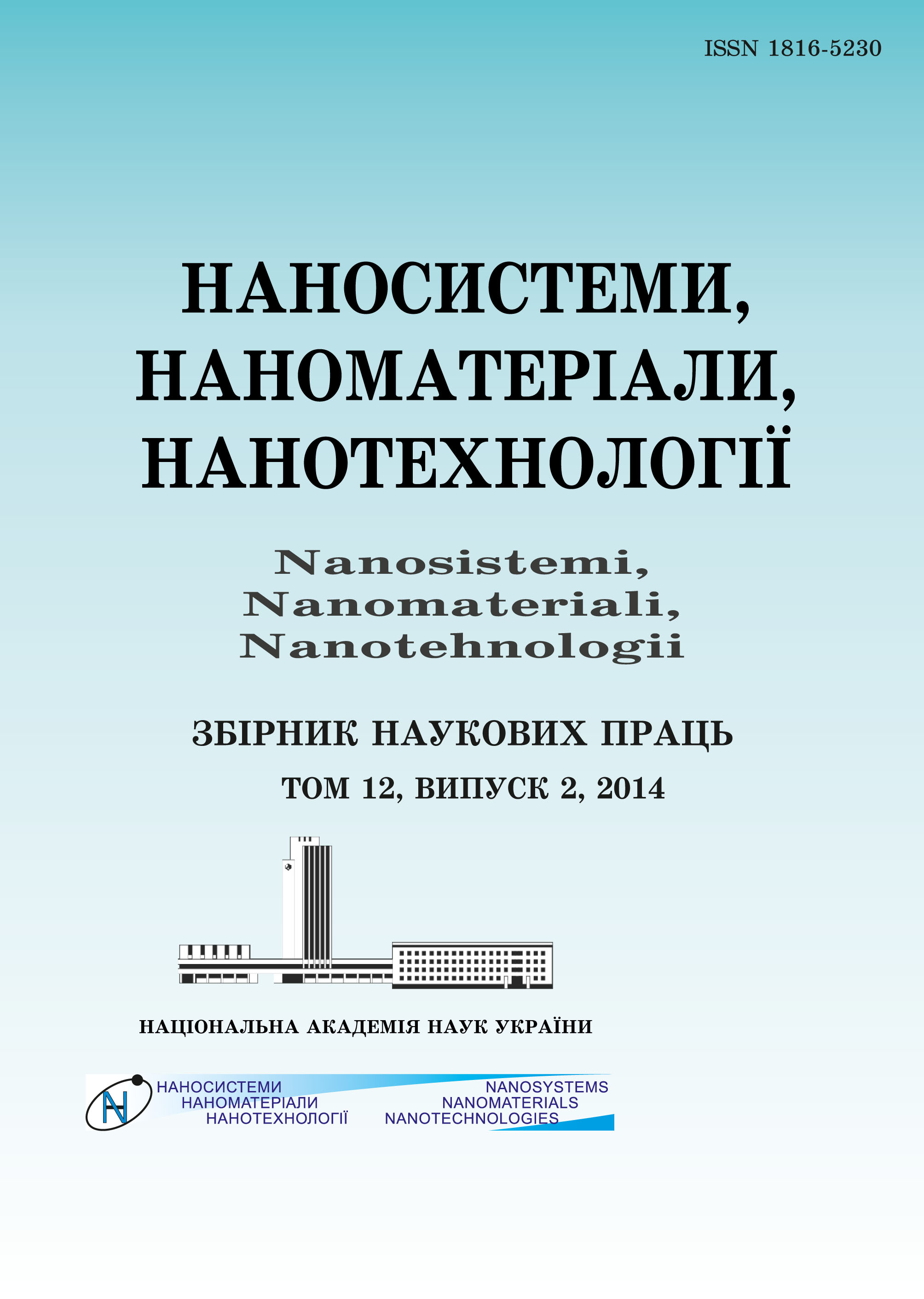|
|
|||||||||

|
Year 2024 Volume 22, Issue 1 |
|
|||||||
|
|||||||||
Issues/2024/vol. 22 /issue 1 |
|
AHMED FILAYIH HASSAN
Preparation and Characterization of
Nanofilm-Coated Modified Electrodes and Their Use in Valsartan Drug Analysis
197–207 (2024)
PACS numbers: 68.37.Hk, 68.37.Ps, 82.35.Np, 82.45.Yz, 87.64.Dz, 87.80.Dj, 87.85.Rs
The use of nanomaterials is a modern trend in electrochemical analysis because of the ease and accuracy of the analysis that, in addition, being non-destructive to the samples, gives the possibility of repeating the analysis to obtain better results. In this research, films of a co-conductive polymer of pyrrole and one of its derivatives are fabricated by docking on a graphite substrate. The film and the substrate form a modified electrode described by EIS and CV in the presence and absence of valsartan. Using a modified electrode, the concentration of valsartan is determined in titres and blood samples of patients with a standard deviation (SD=0.6). The quantitative and detection limit are LOQ=6 ÁM and LOD=1.8 ÁM, respectively. DPV with standard addition method has standard deviation (SD=0.34). The new method succeeds in being more accurate with LOQ=3.4 ÁM and LOD=1.1 ÁM, respectively. F-test proves that the HPLC method is not better than DPV and DPV with modified standard addition methods in determining the drug concentration of valsartan. The modified standard addition method is probably the best
KEY WORDS: polymer thin films, anchoration, modified electrode, differential pulse voltammetry, valsartan
DOI: https://doi.org/10.15407/nnn.22.01.197
REFERENCES
- A. Vali, H. Z. Malayeri, M. Azizi, and H. Choi, Applied Catalysis B, 266, Iss. 1: 118 (2020); https://10.1016/j.apcatb.2020.118646
- T. Hazhir, B. Abbas, and W. Joseph, Chemical Society Reviews, 1, Iss. 1: 127 (2020); doi:10.1039/D0CS00304B
- Sriparna Dutta and R. K. Sharma, Separation Science and Technology, 11: 371 (2019); https://doi.org/10.1016/B978-0-12-815730-5.00015-6
- A. R. Harris, D. B. Grayden, and S. E. John, Micromachines, 14, Iss. 1: 722 (2023); doi:10.3390/mi14040722
- A. Sulciute, K. Nishimura, E. Gilshtein, F. Cesano, G. Viscardi, A. G. Nasibulin, Y. Ohno, and S. J. Rackauskas, Phys. Chem. C, 1, Iss. 125: 1472 (2021); doi:10.1021/acs.jpcc.0c08459
- C. Steinem, A. Janshoff, H. J. Galla, and M. Sieber, Bioelectrochemistry and Bioenergetics, 42, Iss. 2: 213 (1997); doi:10.3390/s80314000
- A. Al-Hamdan, A. Al-Falah, and F. Al-Deri, Kuwait Journal of Science, 48, Iss. 3: 1 (2021); doi:10.48129/kjs.v48i3.9624
- A. Al-Hamdan, A. Al-Falah, and F. Al-Deri, Int. J. Thin. Fil. Sci. Tec., 10, No. 2: 101 (2021); doi:10.18576/ijtfst/100205
- A. Al-Hamdan, A. Al-Falah, F. Al-Deri, and I. Al-ghoraibi, Nanosistemi, Nanomateriali, Nanotehnologii, 20, Iss. 1: 195 (2022); https://doi.org/10.15407/nnn.20.01.195
- A. Al-Hamdan, A. Al-Falah, and F. Al-Deri, Int. J. Thin. Fil. Sci. Tec., 11, Iss. 2: 153 (2022); doi:10.18576/ijtfst/110201
- A. Al-Hamdan, A. Al-Falah, F. Al-Deri, and M. Al-Kheder, Nanosistemi, Nanomateriali, Nanotehnologii, 19, Iss. 4: 913 (2021); https://doi.org/10.15407/nnn.19.04.913
- S. Saha, M. Johnson, F. Altayaran, Y. Wang, D. Wang, and Q. Zhang, Electrochem., 1, Iss. 3: 286 (2020); doi:10.3390/electrochem1030019
- K. S. Lakshmi and L. Sivasubramanian, J. Chil. Chem. Soc., 55, Iss. 2: 223 (2010); doi:10.4067/S0717-97072010000200017
- Y. Hoshina and T. Kobayashi, Engineering, 4, Iss. 3: 139 (2012); doi:10.4236/eng.2012.43018
 This article is licensed under the Creative Commons Attribution-NoDerivatives 4.0 International License ©2003—2024 NANOSISTEMI, NANOMATERIALI, NANOTEHNOLOGII G. V. Kurdyumov Institute for Metal Physics of the National Academy of Sciences of Ukraine. E-mail: tatar@imp.kiev.ua Phones and address of the editorial office About the collection User agreement |